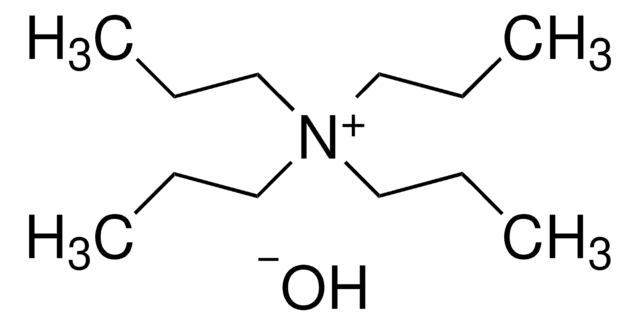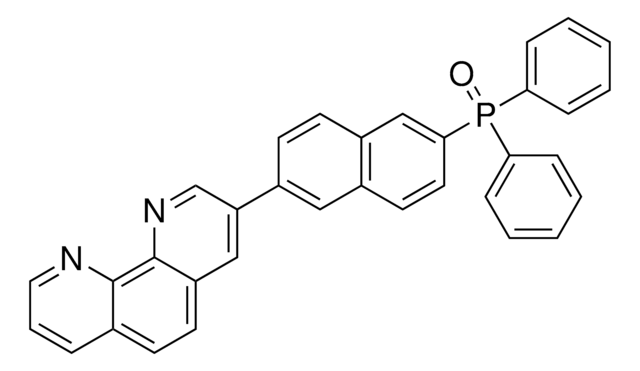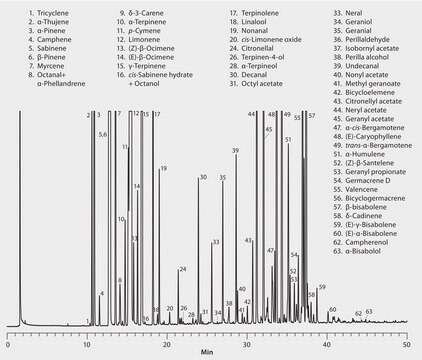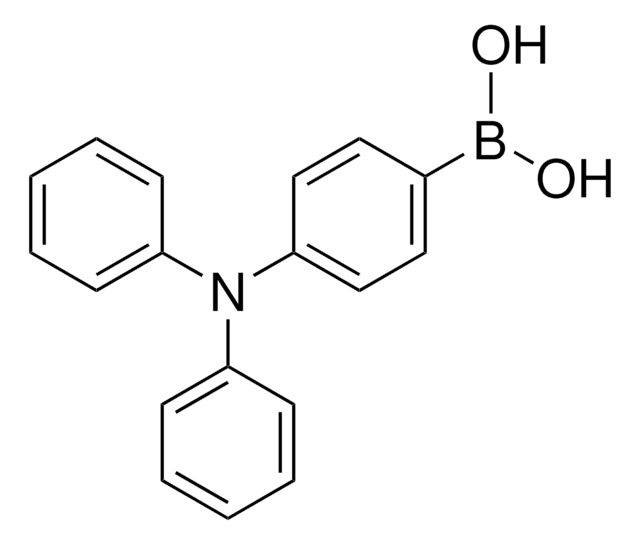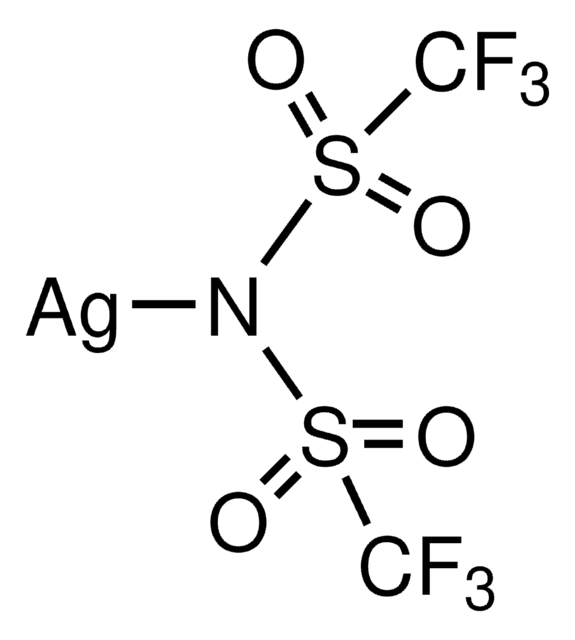Key Documents
906395
EH44
≥99% (HPLC)
Synonim(y):
9-(2-Ethylhexyl)-N,N,N,N-tetrakis(4-methoxyphenyl)- 9H-carbazole-2,7-diamine)
About This Item
Polecane produkty
opis
Band gap in film: 2.99eV, calculated from UV-vis
Band gap in solution: 3.00eV, calculated from UV-vis
Próba
≥99% (HPLC)
Postać
powder
rozpuszczalność
insoluble (Methanol and Hexane)
soluble (DMSO, THF, Toluene, o-Xylene, Anisole, Chloroform, Chlorobenzene, and 1,2-Dichlorobenzene)
Energia orbitalna
HOMO - 4.85 eV
ciąg SMILES
CCC(CCCC)CN1C2=CC(N(C3=CC=C(OC)C=C3)C4=CC=C(OC)C=C4)=CC=C2C5=CC=C(N(C6=CC=C(OC)C=C6)C7=CC=C(OC)C=C7)C=C15
Opis ogólny
Zastosowanie
Using EH44 as HTM in a device configuration of: SnO2/PAL/EH44/MoOx /Al, not only generated high power conversion efficiency (PCE) comparable to the record PCE by using the state-of-the-art-HTM Spiro-OMeTAD, but also most importantly showed greatly improved device stability: even under the combined stresses of light (including ultraviolet light), oxygen and moisture, perovskite solar cells using EH44 as hole transporting layer were shown to retain 94% of their peak efficiency despite 1,000 hours of continuous unencapsulated operation in ambient air conditions (relative humidity of 10-20%). When stability tests were conducted in an inert atmosphere, degradation of only ∼2% over the course of 1,500 hours of continuous operation was observed.
Note that in the above mentioned result, silver bis(trifluoromethanesulfonyl)imide (product 668001) was used to oxidize EH44 and yield EH44+TFSI−.EH44+TFSI− was then blended with neat EH44 at various ratios to control the conductivity (and optical transparency if desired) and optimize the device performance. The impressive power conversion efficiency (PCE) of 18.5% was achieved for a perovskite solar cell using EH44 layers of ∼60 nm thickness doped with 14wt% EH44+TFSI− and 25 mg/ml 4-tert-butylpyridine (product 142379), which is comparable to device performance using spiro-OMeTAD (19%) as the HTM.
Kod klasy składowania
11 - Combustible Solids
Klasa zagrożenia wodnego (WGK)
WGK 3
Temperatura zapłonu (°F)
Not applicable
Temperatura zapłonu (°C)
Not applicable
Wybierz jedną z najnowszych wersji:
Certyfikaty analizy (CoA)
Przepraszamy, ale COA dla tego produktu nie jest aktualnie dostępny online.
Proszę o kontakt, jeśli potrzebna jest pomoc Obsługa Klienta
Masz już ten produkt?
Dokumenty związane z niedawno zakupionymi produktami zostały zamieszczone w Bibliotece dokumentów.
Klienci oglądali również te produkty
Produkty
Professor Chen (Nankai University, China) and his team explain the strategies behind their recent record-breaking organic solar cells, reaching a power conversion efficiency of 17.3%.
Nasz zespół naukowców ma doświadczenie we wszystkich obszarach badań, w tym w naukach przyrodniczych, materiałoznawstwie, syntezie chemicznej, chromatografii, analityce i wielu innych dziedzinach.
Skontaktuj się z zespołem ds. pomocy technicznej